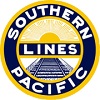Any tips for laying long straight runs of track precisely?
Any tips for laying long straight runs of track precisely?
With the luxury of having Google Map integration in TS2014, I'm beginning to experiment with route building. Do any of you experienced route builders have any tips on how to go about laying long straight runs of track to the map. I've found that if a straight track run is several miles long, even a slight error in the initial direction of the run will accumulate to a significant error in alignment to the map after several miles. How can I get a precise alignment of say a three mile straight track run in TS to the Goggle Map prototype.
-

fecrails - Posts: 505
- Joined: Tue Jun 26, 2012 9:13 am
Re: Any tips for laying long straight runs of track precisely?
I still and will continue to use series makers created from Google KML files for laying track, since you can see those to RW's horizon and are much easier to follow. The Google Maps feature is best suited for laying roads, setting buildings, and determining yard trackage, IMHO.
If you don't want to go through the steps in creating series markers, you could still use Google Maps to set an end location with an object, then return to your start location and use the object as a reference point to aim for.
If you don't want to go through the steps in creating series markers, you could still use Google Maps to set an end location with an object, then return to your start location and use the object as a reference point to aim for.
-

Bananarama - Posts: 2749
- Joined: Sat Feb 14, 2009 1:17 am
- Location: Another Planet
Re: Any tips for laying long straight runs of track precisely?
Well here’s what I've been doing on my route, YMMV....  as I make the corner just before the straight I will over extend the radius part then I will add my easement section with the straight obviously coming off of that. The kicker is I can trim very small parts off the regular radius part to achieve my straight run very precisely. Now is it 3 miles precise don't know haven't had a run that long yet. But I guess with a long radius part to trim I could get it to follow dead nuts.
as I make the corner just before the straight I will over extend the radius part then I will add my easement section with the straight obviously coming off of that. The kicker is I can trim very small parts off the regular radius part to achieve my straight run very precisely. Now is it 3 miles precise don't know haven't had a run that long yet. But I guess with a long radius part to trim I could get it to follow dead nuts.
Roger
 as I make the corner just before the straight I will over extend the radius part then I will add my easement section with the straight obviously coming off of that. The kicker is I can trim very small parts off the regular radius part to achieve my straight run very precisely. Now is it 3 miles precise don't know haven't had a run that long yet. But I guess with a long radius part to trim I could get it to follow dead nuts.
as I make the corner just before the straight I will over extend the radius part then I will add my easement section with the straight obviously coming off of that. The kicker is I can trim very small parts off the regular radius part to achieve my straight run very precisely. Now is it 3 miles precise don't know haven't had a run that long yet. But I guess with a long radius part to trim I could get it to follow dead nuts.Roger
"Just smile and wave boy's, just smile and wave"
-

RvA944 - Posts: 210
- Joined: Sat Jul 13, 2013 9:35 pm
- Location: N.E. PA
Re: Any tips for laying long straight runs of track precisely?
It's difficult to get it right the first time. I often lay and then relay track to get everything lined up.
-

Bananarama - Posts: 2749
- Joined: Sat Feb 14, 2009 1:17 am
- Location: Another Planet
Re: Any tips for laying long straight runs of track precisely?
A couple questions since I am thinking about spending a bit of time on my route.
Easements, I have tried to use them but they do not turn sharp enough in some cases. Is there a way to change this like I did for the track in the track rules? Also can you transition from using easements to not using easements? Must you use it along the whole route once you start?
Easements, I have tried to use them but they do not turn sharp enough in some cases. Is there a way to change this like I did for the track in the track rules? Also can you transition from using easements to not using easements? Must you use it along the whole route once you start?
"Just post some random unrelated text. We have members here who can help you with that." ~ Chacal
"When all else fails, read the instructions... if that doesn't work either, try following them." ~ Old Prof
The Grade Crossing - Atlanta North Project - Virtual Rail Creations
-

PapaXpress - Posts: 5147
- Joined: Sat Oct 23, 2010 10:30 pm
- Location: that "other" timezone
Re: Any tips for laying long straight runs of track precisely?
I found the easment length is controled by the line speed, so yes change that in the track file to change the lenght of the easments. and you can turn them on and off at will. So if your running mainline use easments, doing yard no easments.
Roger
Roger
"Just smile and wave boy's, just smile and wave"
-

RvA944 - Posts: 210
- Joined: Sat Jul 13, 2013 9:35 pm
- Location: N.E. PA
Re: Any tips for laying long straight runs of track precisely?
...or six or seven times...
I prefer to use Roger's method, but when it comes to to really fine control I find the only way is to lay the length of the easement track to the exact length required before commencing the straight. And repeating the exercise until I've sussed out what the exact length is.
There have been a few really long straights I've done recently where even 1cm either way introduced a massive inaccuracy by the time I'd reached the other end of the section.
All good fun whichever way you decide to do it.
PapaXpress - are you changing the track type for your tighter curves? There's no reason why you can't chop and change with using easements and not using them, even halfway through a curve if you want to.
I wrote up a few notes in this thread, if you fancy boring yourself stiff. http://forums.uktrainsim.com/viewtopic.php?f=365&t=127848&st=0&sk=t&sd=a&hilit=easement&start=15#p1595597 (Oh, and don't worry too much if you don't understand what AndiS is talking about - the man is an intellectual giant, but sometimes tricky to follow)
I prefer to use Roger's method, but when it comes to to really fine control I find the only way is to lay the length of the easement track to the exact length required before commencing the straight. And repeating the exercise until I've sussed out what the exact length is.
There have been a few really long straights I've done recently where even 1cm either way introduced a massive inaccuracy by the time I'd reached the other end of the section.
All good fun whichever way you decide to do it.

PapaXpress - are you changing the track type for your tighter curves? There's no reason why you can't chop and change with using easements and not using them, even halfway through a curve if you want to.
I wrote up a few notes in this thread, if you fancy boring yourself stiff. http://forums.uktrainsim.com/viewtopic.php?f=365&t=127848&st=0&sk=t&sd=a&hilit=easement&start=15#p1595597 (Oh, and don't worry too much if you don't understand what AndiS is talking about - the man is an intellectual giant, but sometimes tricky to follow)
"Life is like a journey, taken on a train
With a pair of travelers at each windowpane.
I may sit beside you all the journey through,
Or I may sit elsewhere, never knowing you.
But if fate should mark me to sit by your side,
Let's be pleasant travellers; it's so short a ride."
With a pair of travelers at each windowpane.
I may sit beside you all the journey through,
Or I may sit elsewhere, never knowing you.
But if fate should mark me to sit by your side,
Let's be pleasant travellers; it's so short a ride."
-

hertsbob - Posts: 388
- Joined: Wed Aug 17, 2011 5:15 am
- Location: The Hollywood of SW Herts
Re: Any tips for laying long straight runs of track precisely?
Thanks for the tips everyone!
I'll experiment with each of them to develop a personal method that improves my accuracy.

I'll experiment with each of them to develop a personal method that improves my accuracy.

-

fecrails - Posts: 505
- Joined: Tue Jun 26, 2012 9:13 am
Re: Any tips for laying long straight runs of track precisely?
Oh crap!! 
Well I was looking at my track chart last night after I decided I was going to add a 64 mile extention on to my route, and I guess I'll find out how good my method is, as I have a 34.3 mile long straight I'll have to lay.
This is gonna be fun


Well I was looking at my track chart last night after I decided I was going to add a 64 mile extention on to my route, and I guess I'll find out how good my method is, as I have a 34.3 mile long straight I'll have to lay.
This is gonna be fun

"Just smile and wave boy's, just smile and wave"
-

RvA944 - Posts: 210
- Joined: Sat Jul 13, 2013 9:35 pm
- Location: N.E. PA
Re: Any tips for laying long straight runs of track precisely?
RvA944 wrote:Oh crap!!
Well I was looking at my track chart last night after I decided I was going to add a 64 mile extention on to my route, and I guess I'll find out how good my method is, as I have a 34.3 mile long straight I'll have to lay.
This is gonna be fun
That sounds like the tracks in south and central Florida. Here's a 55 mile straight, flat run on the CSX northeast of Lake Okeechobee.
It runs from Okeechobee City to West Palm Beach. Like hertsbob said, 1cm off on the initial vector can make or break a run like this!

You do not have the required permissions to view the files attached to this post.
-

fecrails - Posts: 505
- Joined: Tue Jun 26, 2012 9:13 am
Re: Any tips for laying long straight runs of track precisely?
I placed a 75 mile straight in Railworks not that long ago, preceded by a 1600 metre curve. With the jump to track tool, as well as easements being enabled, it was just a matter of noting the length of curve I used between the transition track pieces in the curve, making it a fraction shorter each time, before rejoining the pieces. However, this was only a portion of the actual length of the straight.
Geforce GTX 1060
16GB RAM
Intel Core i5-3350 3.10ghz
Win te(n) Home
16GB RAM
Intel Core i5-3350 3.10ghz
Win te(n) Home
- SAR704
- Posts: 716
- Joined: Tue Jun 21, 2011 9:48 am
- Location: Adelaide, South Australia
Re: Any tips for laying long straight runs of track precisely?
Or if you find after about 3 miles you are slightly off course, just use a very shallow eased curve (say 10000m radius) to gently ease back in the right direction. Users will barely notice as they drive the route and it saves much wasted time going back and relaying the curve to get the correct exit angle.
Vern
-

NorthernWarrior - Posts: 278
- Joined: Sun Sep 29, 2013 8:47 am
Re: Any tips for laying long straight runs of track precisely?
I might try reversing this process (but it might not be any easier)... first lay out the straight track from before the start point to end point. If it starts going off course, go back to the first segment and use G and H keys to finely rotate/adjust (move camera view extremely close for finer precision), then fly along the route reconnecting subsequent straight segments using the Track Join tool. When the end point arrives to the right spot, go back and create that preceding/leading curve with Easements off and Snap-to-Track on. Cut off the excess straight track preceding the Snap-To joint. Then precisely note the curve length and curvature, remove it and replace with exact same length and curve using Easements. Move your camera view in extremely close to the end of the curve (also when beginning the easement curvature) to control precision of placement/length/curvature. Sometimes, if I get it exactly right, the curve will weld itself to the straightaway which indicates the joint alignment is definitely within tolerance. Sometimes, addition of the easement will leave the curve end just slightly left or right of the spot where the non-easement curve ended, but if your curve and length are right, it's little sacrifice to slide the straightaway slightly right/left to line up. The last step would be to remove the first segment of straightaway and relay it with Easements turned on to create the short easement "runout" segment from the curve.
If the curve is sharp, the Easement laid curve might not come out to exactly the same length/radius as the Non-easement one, but it's usually so close that a tiny adjustment will bring things into alignment to make that final connection. I've used this method to add the SE feature into sections of the Alleghany without having to relay track for the entire route.
Papa, there's no problem switching from Easement to Non-Easement track unless you plan to implement Superelevation. Using SE means you can only use non-easement track in straightaways (beyond the short "runout" segment from the curve to straight track). Junctions must be built in in Non-Superelevated track, so they have to be either in a straight segment or SE must be turned off in a straight stretch before and after the junction segment which will leave curves between those points flat. I think maybe the only good uses for Non-Easement track now is junctions, crossovers, and yards.

Tori
If the curve is sharp, the Easement laid curve might not come out to exactly the same length/radius as the Non-easement one, but it's usually so close that a tiny adjustment will bring things into alignment to make that final connection. I've used this method to add the SE feature into sections of the Alleghany without having to relay track for the entire route.
Papa, there's no problem switching from Easement to Non-Easement track unless you plan to implement Superelevation. Using SE means you can only use non-easement track in straightaways (beyond the short "runout" segment from the curve to straight track). Junctions must be built in in Non-Superelevated track, so they have to be either in a straight segment or SE must be turned off in a straight stretch before and after the junction segment which will leave curves between those points flat. I think maybe the only good uses for Non-Easement track now is junctions, crossovers, and yards.

Tori
-

Toripony - Posts: 1083
- Joined: Thu Jun 04, 2009 3:13 am
Re: Any tips for laying long straight runs of track precisely?
There was a spread sheet that was published as freeware in the early days of Rail Simulator that allowed you to lay straight track accurately over large distances, it is called Taking Aim. I am attaching a copy of it to this post. Read the instructions and see if this is what you are looking for.
You do not have the required permissions to view the files attached to this post.
-

dick8299 - Posts: 385
- Joined: Sat Feb 28, 2009 7:50 am
Re: Any tips for laying long straight runs of track precisely?
I tell you what I have struggled trying to lay long runs of track straight and this spread sheet was just the thing I needed awesome thank you
- sadams2483
16 posts
• Page 1 of 2 • 1, 2
Who is online
Users browsing this forum: No registered users and 1 guest

